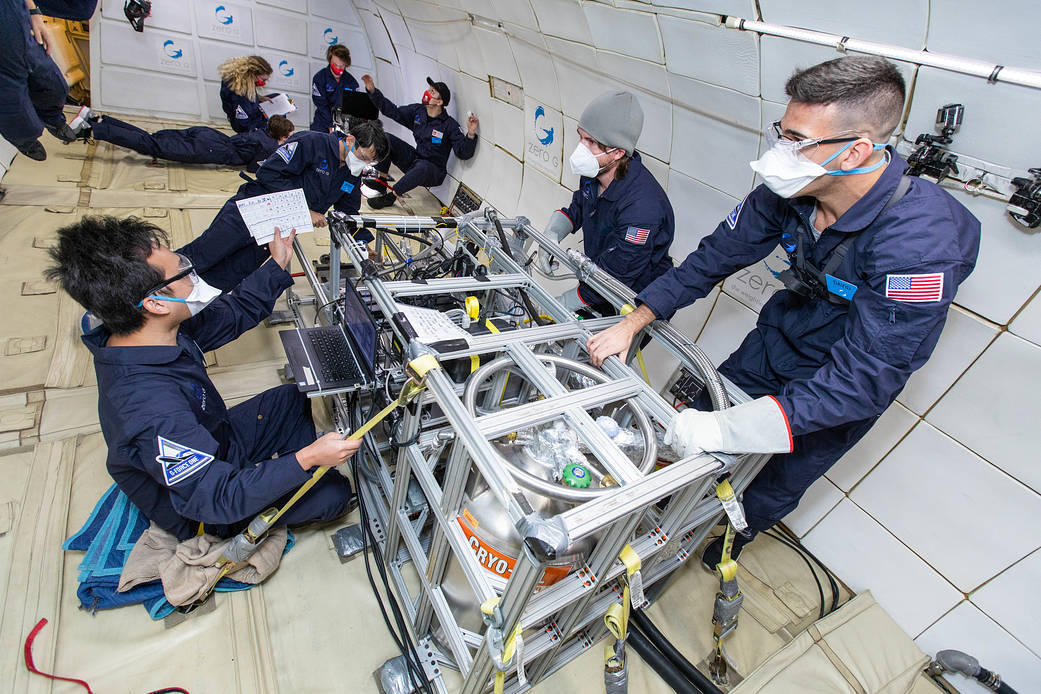NASA teamed up with a group of researchers from Dr. Jacob Chung’s lab at the University of Florida in Gainesville and the Aerospace Corporation based in El Segundo, California, to test two technologies to reduce the amount of cryogenic propellant consumed during future space missions. Instead of working in a typical lab, a plane following a parabolic flight path briefly suspended the technologies and researchers in microgravity.
Spacecraft propellants such as liquid hydrogen and oxygen must be maintained at extremely cold, or cryogenic, temperatures (-296 degrees Fahrenheit and below) to keep them from boiling or evaporating. During in-space transfers or refueling, the servicing spacecraft’s lines and tanks could be much warmer than the fluid and could lead to significant propellant loss.
NASA’s Reduced Gravity Cryogenic Transfer (RGCT) project has come up with two solutions – a Teflon™ coating on the inside of the lines and a pulse flow technique. The coating lowers the interior temperature of the line, allowing the cold propellant to flow sooner. The pulse flow technique improves the system’s ability to remove heat from the line quickly. Both the coating and the pulse flow technique were developed by the University of Florida under the NASA RGCT project. Eventually, engineers could use both of these technologies in tandem for a maximum propellant savings.
The microgravity testing was key to determining whether the technologies kept the fuel temperature down. During the Zero Gravity Corporation flight, the aircraft climbed to 30,000 feet and then quickly descended to 25,000 feet, creating about 20 seconds of microgravity. The engineering team built a test rig that uses liquid nitrogen to simulate the fuel transfer process and worked together to control and monitor the line chill down procedure throughout the 25 parabolas they experienced during the flight.
“These technologies performed as we’d hoped during the recent parabolic flight test,” said Jason Hartwig, RGCT principal investigator at NASA’s Glenn Research Center in Cleveland. “We demonstrated more than 50% propellant mass reduction using pulse flow compared to continuous flow and more than 55% mass reduction using the coated tube compared to an uncoated line.”
The parabolic flight results are encouraging for future transfer systems, showing that both technologies offer significant improvement over current systems and offer mass and cost savings.
Image credit: Zero Gravity Corporation

























